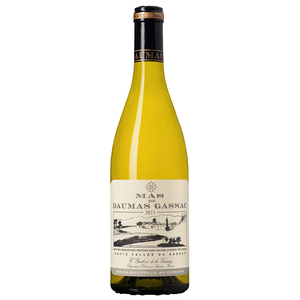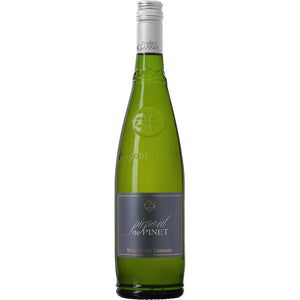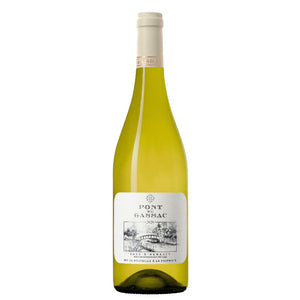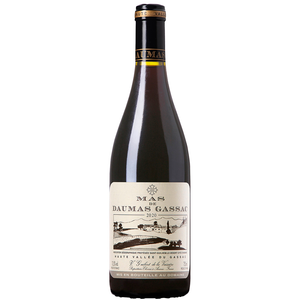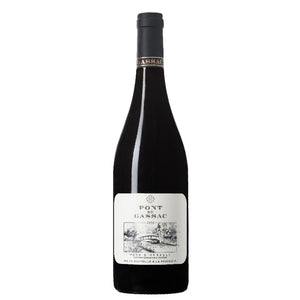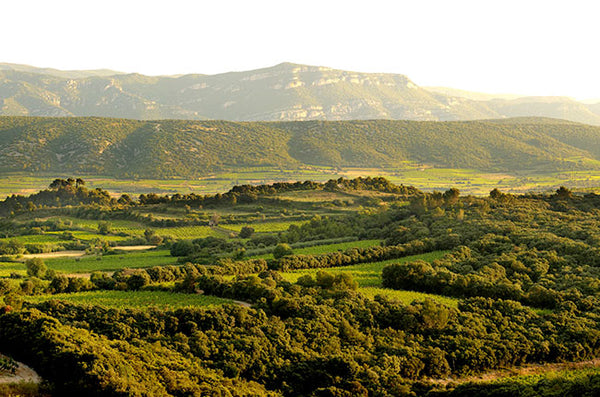
Mas de Daumas Gassac
Mas de Daumas Gassac's nearly 1,250-year history dates back to around 780, when Benedictine monks were among the first to make wine in the area. Fast-forwarding to 1970, Véronique and Aimé Guibert are seen touring the area looking for a home for their family. Along the road lined with pine trees, they ended up at an old inn and an abandoned mill, a farm that belonged to the Daumas family, and which they immediately felt suited them. Not knowing which raw material production would be the most successful in the region, the Guibert couple asked their friend Henri Enjalbert, who works as a professor at the University of Bordeaux, for advice. After visiting the farm and studying its soils for several hours, the professor saw similarities in the area to the Ice Age sandstone, which is also found in abundance in the Côte d'Or region of Burgundy. The professor was convinced that Mas de Daumas Gassac could also produce Grand Cru-level red wines in the region, but warned the Guiberts that recognition could take centuries. However, the couple was up for the challenge, and so began the story of this farm that has achieved legendary status.
The farm's first Cabernet Sauvignon vines were planted in 1972. Instead of clones, cuttings from the nurseries of the best farms in Bordeaux were planted in the 1930s and 40s. These vines did not produce the highest yields or were the most resistant to pests, but they produced the best wines on the farms. At the same time, in connection with the planting of the orchards, a wine house and cellar were started to be built in the premises of the old water storage of an abandoned mill, where the temperature was naturally constant. In 1978, the oenologist Emile Peynaud, who consults the top Bordeaux houses, visited the farm for the first time. The visit made such a strong impression on Peynaud that he decided to start consulting on the estate's winemaking, even though the name of Mas de Daumas Gassac was not yet known anywhere and the estate's red wine was almost impossible to sell during the first years. Little by little, however, the wine began to attract international attention, and it was compared in the media to both Lafite-Rothschild and Latour.
Moulin de Gassac began in 1991, when Aimé Guibert became more aware of the personality of Villeveyrac's proximity. At the same time, with the European Union pruning the Languedoc-Roussillon shelter area in particular, Guibert decided together with the local farmers starts to save and save the plots he sees as the best. The Moulin de Gassac project quickly became a savior of history, heritage and original terroir, and thus a series of wines with a distinct regional identity of their own was born.
Moulin de Gassac's first wine, released in 1991, honored family friend Henri Enjalbert. Figaro, published in 1993, was also chosen as the best in its category in the whole world. Every wine released later also tastes of the unique Languedoc terroir: the close location of the vines to the Mediterranean Sea, the amphitheater-like opening towards the Mediterranean Sea and the port of Sète, the intensity that the slopes of Villeveyrac bring to the wines, and the nature of the southern climate. The clayey and calcareous soil of the orchards dedicated to red varieties is dry and allows the grapes to fully ripen while naturally limiting the yield of the orchards. The white varieties are obtained from the Thau Lagoon area near the village of Pinet, where the soil consists of clay and pebbles carried by the sea. The white wines of the region taste Mediterranean freshness.
Whereas Mas de Daumas Gassac's 50-hectare vineyards are being converted to biodynamic viticulture, the younger brother Moulin de Gassac's philosophy also includes respect for biodiversity and the environment. This can be seen in the vineyards, for example, by using pheromones and bats in the fight against pest insects in the nurseries, as well as by abstaining from herbicides and allowing natural growth in the nurseries.
Towards the end of the 21st century, the second generation, which includes Samuel, Roman, Gaël, Amélien and Basile Guibert, has taken over the operation of both facilities. Following in the footsteps of their father, who passed away in March 2016, they continue their long-term work, producing exceptionally fresh and elegant wines that express their origin.
The total production of Mas de Daumas Gassac is around 200,000 bottles per year. Moulin de Gassac's total production is around 2 million bottles per year. The producer has a Terra Vitis certificate.
https://www.daumas-gassac.com/

